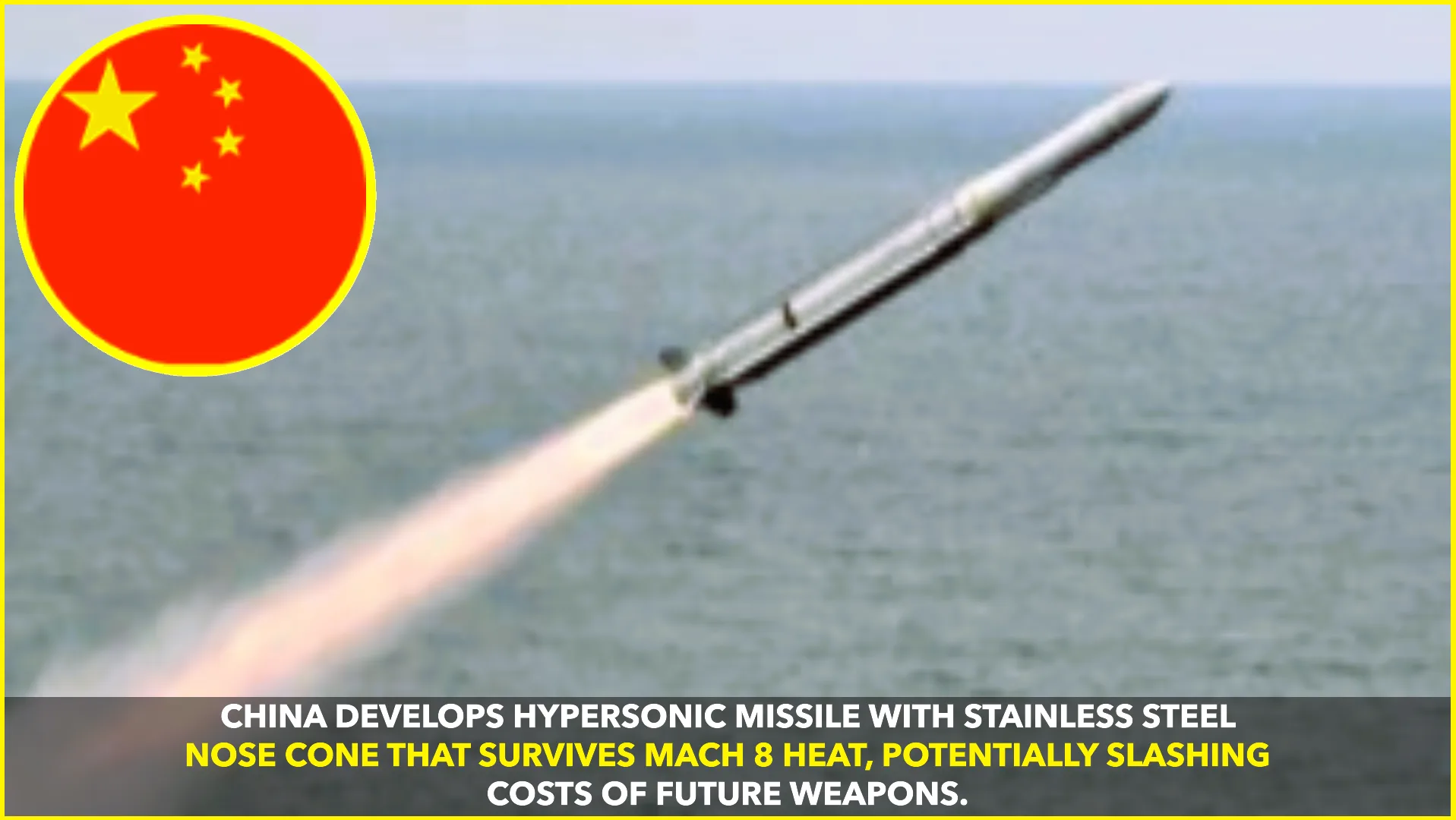In a major breakthrough in missile technology, Chinese researchers have reportedly developed a hypersonic missile with a stainless steel nose cone—a feat previously considered nearly impossible due to the metal’s relatively low melting point. The development was disclosed by the South China Morning Post (SCMP), which cited a study from the Beijing Institute of Technology.
Hypersonic missiles, which travel at speeds exceeding Mach 5, generate extreme aerodynamic heating during flight. At speeds near Mach 8, the temperature at the missile’s nose cone can soar above 1,500°C. Historically, such temperatures have necessitated the use of exotic materials like tungsten or advanced ceramics that can withstand temperatures over 2,500°C. Stainless steel, by contrast, melts at approximately 1,200°C (2,200°F), long making it unsuitable for hypersonic applications.
However, Chinese scientists appear to have overcome this long-standing limitation by engineering a novel thermal protection system. According to the SCMP report, researchers achieved this by combining high-strength stainless steel with layers of ultra-high-temperature ceramic coatings and thermally insulating materials like aerogel. This innovative multilayer defense shields the metal from the worst of the heat stress, enabling it to endure temperatures as high as 3,000°F (about 1,650°C).
“Steel’s low cost and availability make it a very attractive material, if you can solve the thermal limitations,” said Dr. Zhang Jun, a defense analyst not associated with the project. “This advancement could drastically change the economics of hypersonic weapon development.”
The Beijing Institute of Technology team tested the new nose cone design in wind tunnel simulations and thermal tests simulating Mach 8 flight conditions. The results, according to SCMP, showed that the structure remained stable and intact under extreme temperature and pressure conditions.
This development comes at a time when hypersonic weapon systems are at the forefront of global military competition. Countries including the United States, Russia, and China are racing to field deployable hypersonic systems due to their speed, maneuverability, and difficulty to intercept using conventional missile defense systems.
Hypersonic vehicles typically require advanced materials and manufacturing processes, making them extremely costly to develop and produce. Tungsten, for instance, costs significantly more than steel and is challenging to machine and integrate into missile structures. By contrast, stainless steel is widely available, easier to process, and far more affordable.
“This could be a game-changer in terms of scaling up hypersonic weapons,” said Professor Li Cheng from Tsinghua University, who was not involved in the research but specializes in high-temperature materials. “If these claims hold up under real-world testing, China may be able to mass-produce hypersonic weapons more economically than its rivals.”
Beyond cost and availability, the use of stainless steel may also simplify supply chains and reduce reliance on rare-earth materials or specialized alloys, some of which are under export restrictions or subject to geopolitical tensions.
While there has been no official confirmation from China’s Ministry of Defense, the publication of the findings in state-affiliated scientific journals suggests that the research has passed internal verification stages.
Global defense observers are closely monitoring this development, as it could signal a shift in the hypersonic balance of power. If validated through operational testing, this new approach could allow China to produce hypersonic weapons at scale and at lower costs—potentially reshaping future battlefield dynamics.
Source: South China Morning Post (SCMP) – Report on Chinese hypersonic missile material innovation by Beijing Institute of Technology.










